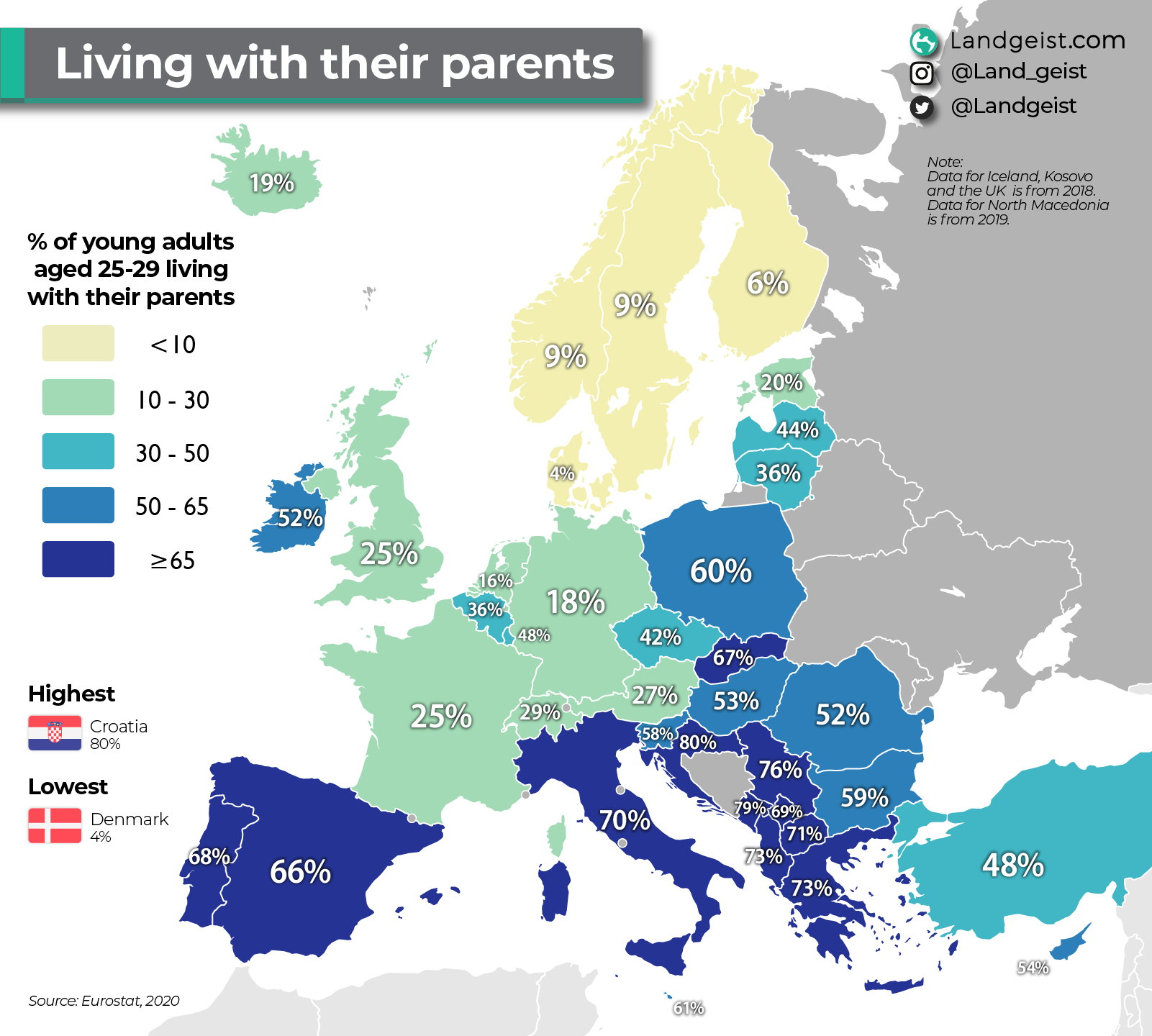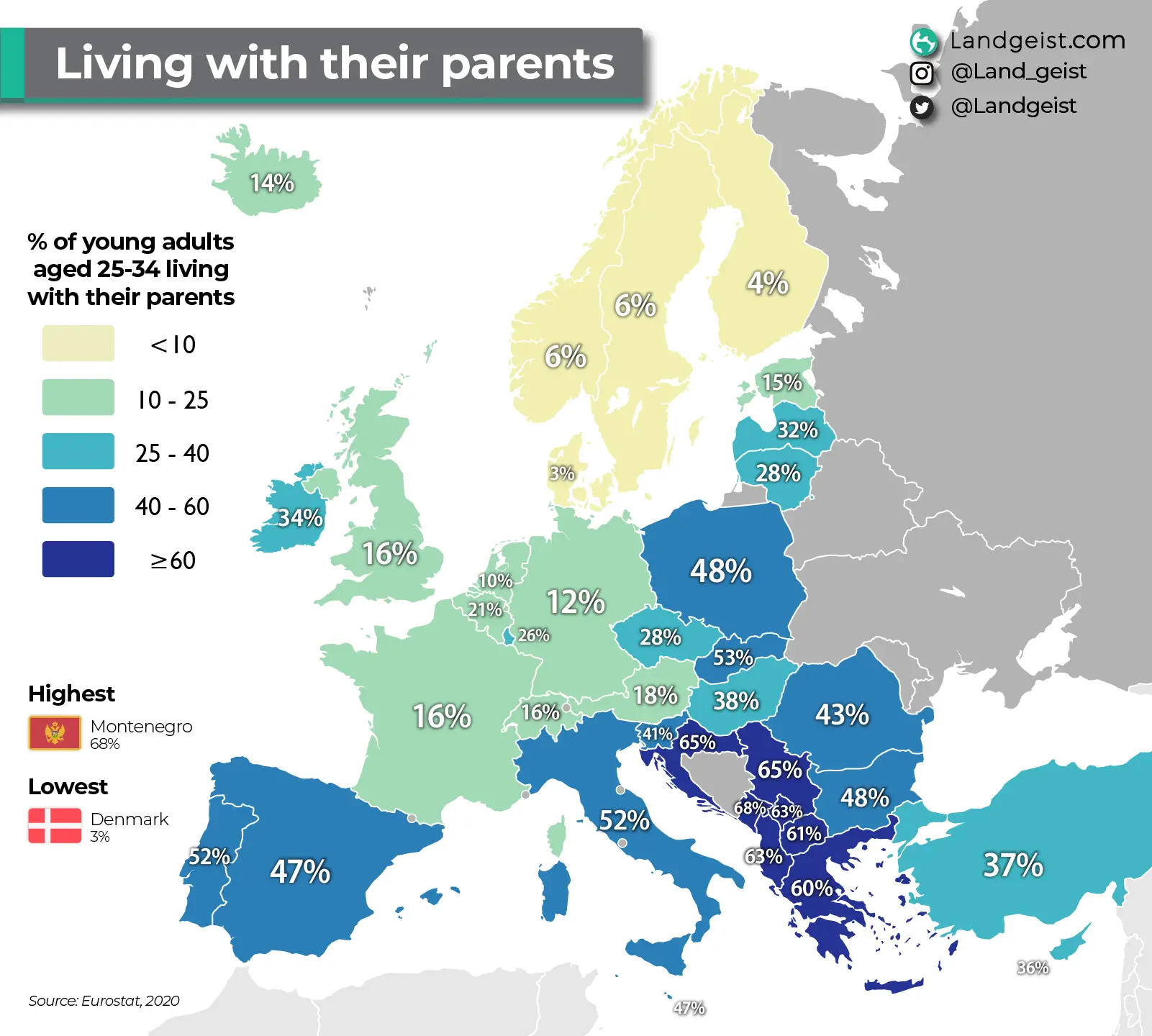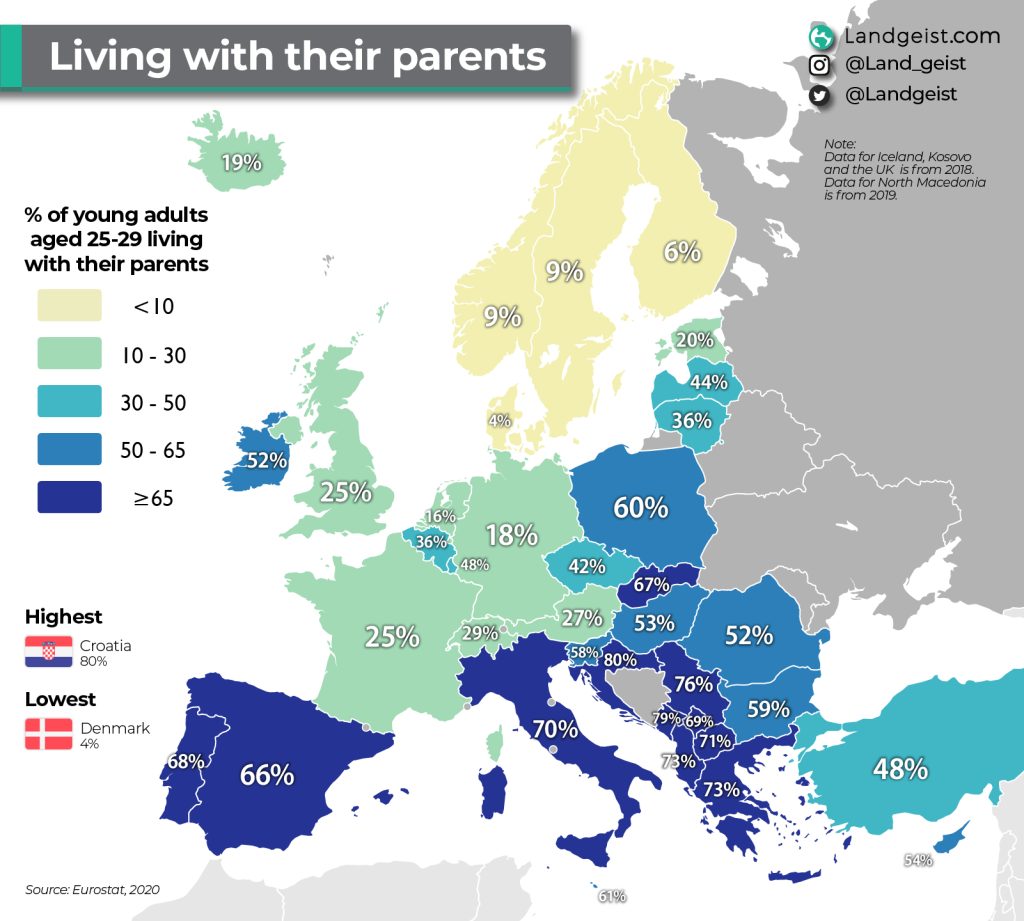Several factors could be attributed to the fact that Croatia ranks first among the countries with the highest percentage of young adults (25-29 years old) who still live with their parents. High rental costs, family businesses, or it could even be an attachment issue. The fact is that 80% of young adults in Croatia have not yet left the nest.
Although Croatia is the European country that stands out from the rest, the same trend can be highlighted in other countries of the Balkan region, such as Serbia (76%), Montenegro (79%), Albania (73%), Kosovo (69 %) or North Macedonia (71%).
Landgeist is a web portal that compiles and analyzes statistics from different countries and continents of the world, on a wide variety of topics, and designs maps that help to better understand the analysis and compare the numbers between different countries or regions more easily. Landgeist commented on his most recent map of the percentage of young adults living with their parents:
”Until what age young adults live with their parents can depend on a lot of factors. Culture, housing, the economy, and religion can all play an important role in that. For this map, we can straight away see that there is a very strong geographical pattern for this subject.”, analyzed Landgeist.
”The differences in numbers are enormous in Europe. While only a very tiny percentage of Danes between the ages of 25 and 29 live with their parents, the vast majority of people in the same age group in the Balkans live with their parents.”, added the portal.

”As we start looking at south and eastern Europe, we can see that the percentages are mostly over 50%. The highest percentages can be found in the Balkans. In most of the Balkan countries, 70% of young adults live with their parents. The number is the highest in Croatia, where 80% of young adults live with their parents.”, said Landgeist.
”The data for this map comes from Eurostat. The data also includes people that live with only one parent”. For this dataset, Landgeist thought it would be most interesting to look at the oldest age group of young adults. ”The source data contains numbers for the ages of 16 to 34. However, there is no data for specifically the 30 to 34 group, only 25 to 34. Which is too broad of an age group, according to Landgeist. Especially because there often is quite a bit of a difference between people in their late twenties and early thirties when it comes to job stability and income.”, they added.
”The data comes from a survey and is collected through interviews. So, the data is not based on where people are officially registered. In some countries, young people sometimes stay registered at their parent’s place. While in reality, they live elsewhere to study. This could skew the data for some countries. Fortunately, this dataset is based on where people actually live, instead of where they’re registered.”, Landgeist precise.

The web portal, using another source, also designed a map to analyze the situation of young adults between 25 and 34 years old, and in it Montenegro now leads, with 68%. However, Croatia remains in the top spot, this time tied second with Serbia, with a percentage of 65%.
For more, check out our lifestyle section.








